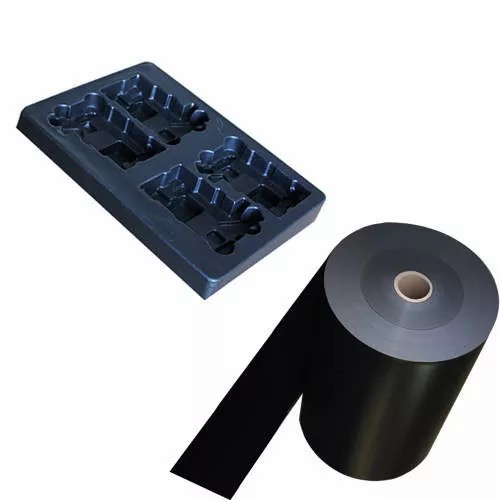The Difference Between PP Sheet and PVC Sheet
First, PP is an environmentally friendly material.
Second, the difference between PP and PVC can be clearly distinguished in terms of appearance and feel;
PP feels harder while PVC is relatively soft. The best way to test is to burn these two materials with an open flame. The black dusty form is PVC but PP does not. It can also be distinguished from the smell, PVC has a choking smell, while PP is tasteless.

PVC (polyvinyl chloride) and PP (polypropylene) have different monomers.
Identify by combustion identification method:
PP burns easily, melts and drips, and the burning flame state is yellow up and down blue with less smoke, continues to burn after leaving the fire, and smells of oil.
PVC is difficult to burn, melts and softens, the flame state is yellow up and green with smoke, extinguished from the fire, pungent sour smell.
PP is a thermoplastic resin made by the polymerization of propylene. There are three configurations of isotactic, random and syndiotactic. Industrial products are mainly composed of isotactic. Polypropylene also includes copolymers of propylene and a small amount of ethylene. It is usually a translucent colorless solid, odorless and non-toxic. Due to the regular structure and high crystallization, the melting point is as high as 167¡æ, heat resistance, and the products can be steam sterilized are its outstanding advantages. With a density of 0.90g/cm3, it is the lightest general-purpose plastic. Corrosion resistance, tensile strength 30MPa, strength, rigidity and transparency are better than polyethylene. The disadvantages are poor low-temperature impact resistance and easy aging, but they can be overcome by modification and addition of antioxidants.

Features:
Non-toxic, odorless, low density, strength, rigidity, hardness and heat resistance are better than low-pressure polyethylene. It can be used at about 100 degrees. It has good electrical properties and high-frequency insulation. It is not affected by humidity, but it becomes brittle at low temperature. Not wear-resistant, easy to age. Suitable for making general mechanical parts, corrosion-resistant parts and insulating parts. Common acid and alkali organic solvents have almost no effect on it and can be used for food utensils.
Combustion characteristics: It is flammable and will continue to burn after leaving the fire. The upper end of the fire is yellow, the lower end is blue, with a small amount of black smoke. When burning, it will drip and emit a petroleum smell. The injection temperature is 190-240.
PVC is one of the largest plastic products in the world. It is cheap and widely used. PVC resin is white or light yellow powder. Different additives can be added according to different uses, and PVC plastics can exhibit different physical and mechanical properties. Adding an appropriate amount of plasticizer to the polyvinyl chloride resin can be made into a variety of hard, soft and transparent products.
The density of pure polyvinyl chloride is 1.4g/cm3, and the density of polyvinyl chloride plastic parts added with plasticizers and fillers is generally 1.15-2.00g/cm3.
Rigid polyvinyl chloride has good tensile, flexural, compressive and impact resistance, and can be used as a structural material alone.
The softness, elongation at break, and cold resistance of soft PVC will increase, but the brittleness, hardness, and tensile strength will decrease.
Polyvinyl chloride has good electrical insulation properties, can be used as low-frequency insulation materials, and its chemical stability is also good. Due to the poor thermal stability of polyvinyl chloride, long-term heating will cause decomposition, release HCL gas, and make polyvinyl chloride discolor, so its application range is narrow, and the use temperature is generally between 15 and 55 degrees.
PVC is non-flammable and extinguishes when you leave the fire. However, when the fire burns, the upper end is yellow, the lower end is green, and there is white smoke. When burning, the rubber is soft and emits a pungent odor of hydrochloric acid. PVC is lightly toxic, but there are also food-grade PVCs. . The English abbreviation of PVC polyvinyl chloride. There are two kinds of hard and soft.

Divided into toxic and non-toxic categories. The hard plastic used in family life is basically PVC. Such as water pipes and wire sheaths. PP polypropylene. Plastic carbonated beverage bottles are made of PP (Coke), which can withstand a little pressure. In addition, there is a toolbox bottom and cover that are integrated, and can be opened and closed repeatedly without hinges. This material must be PP.
Relative News
- Review of the first day of the 2025 Chinaplas exh…
- Application and unique advantages of light blocki…
- PULIXIN sincerely invites you to visit 2025Chinap…
- Today’s shipment – 20 tons of anti-fr…
- Customer Case: Successful Application of Anti-fre…
- How does the impact resistance of HIPS plastic sh…
- How to choose the appropriate HIPS sheet thicknes…
- Application Cases of PS Plastic Sheets in Thermof…
- Today’s shipment: Antistatic PP plastic she…
- Application Case of Antistatic PP Plastic Sheet &…
